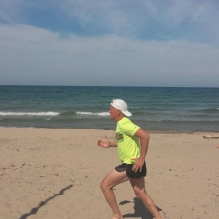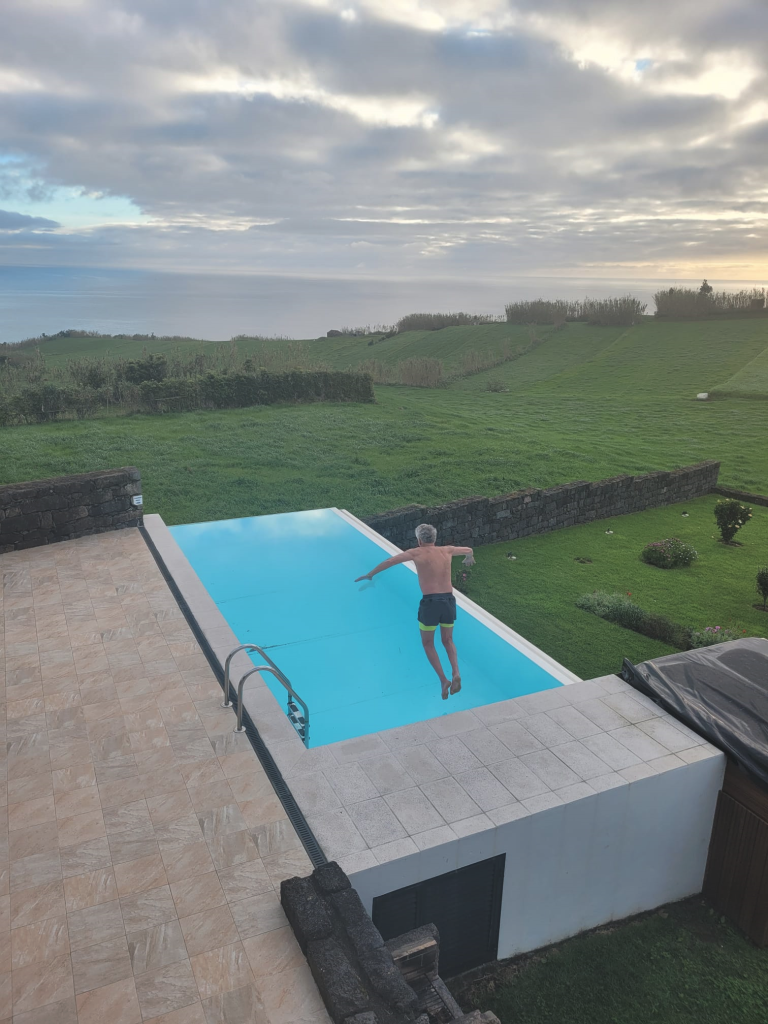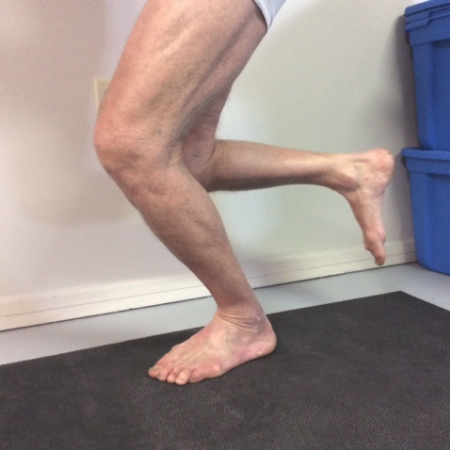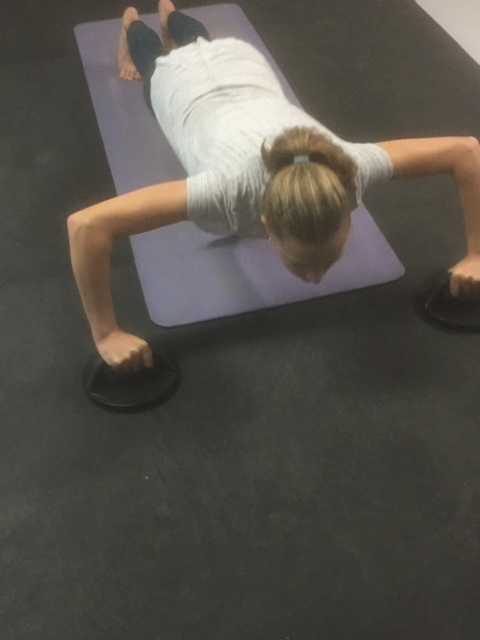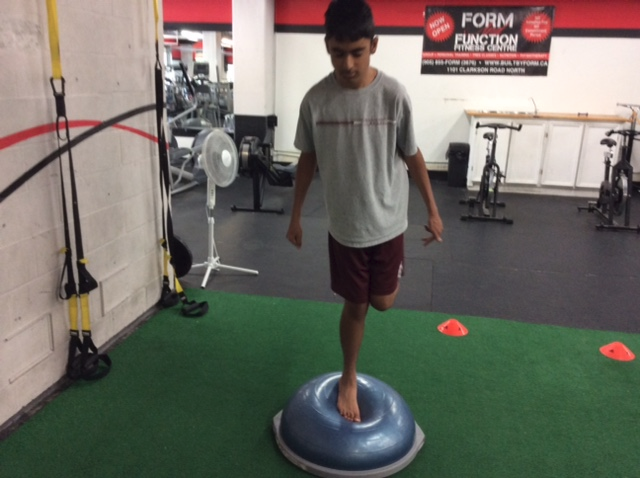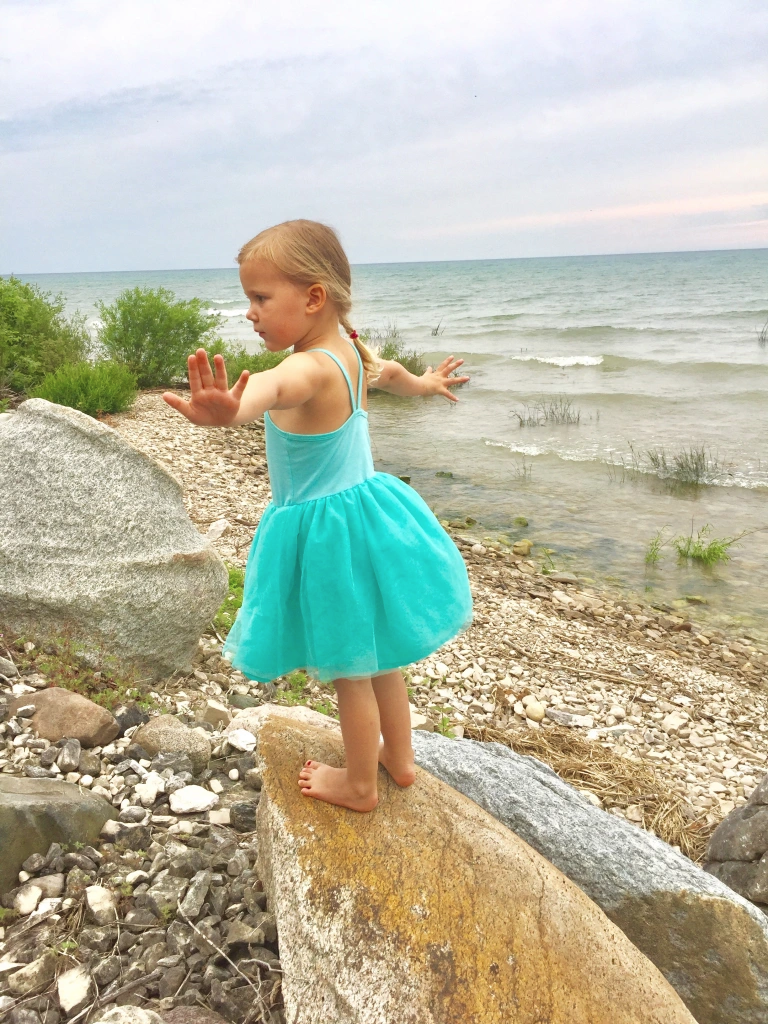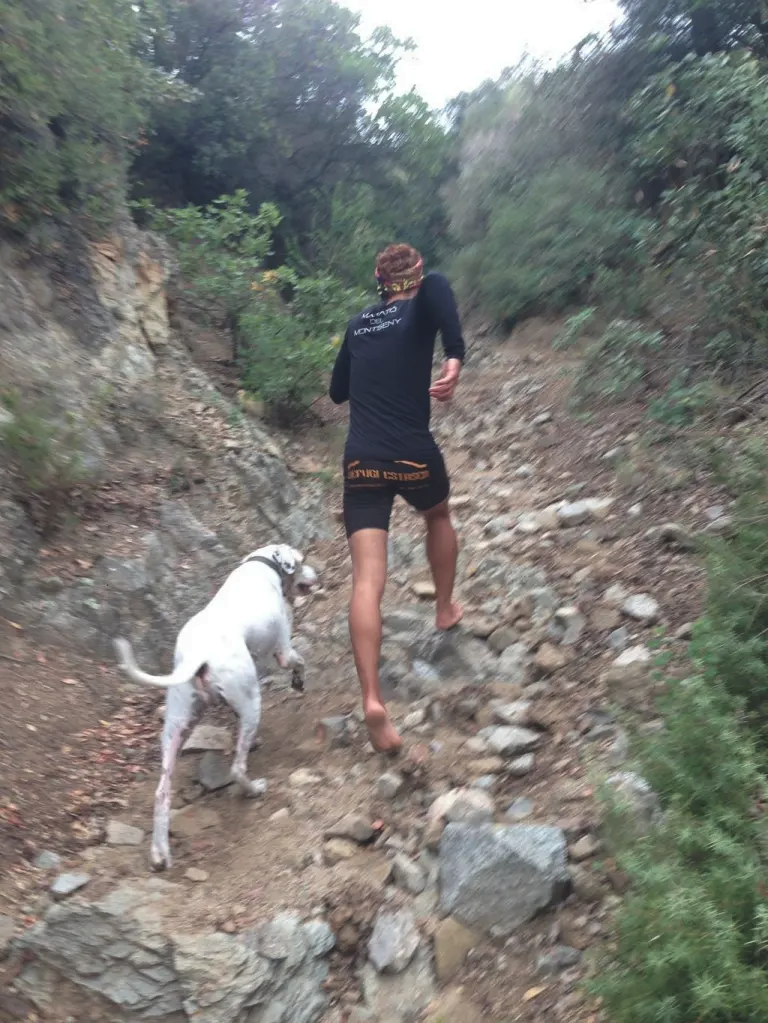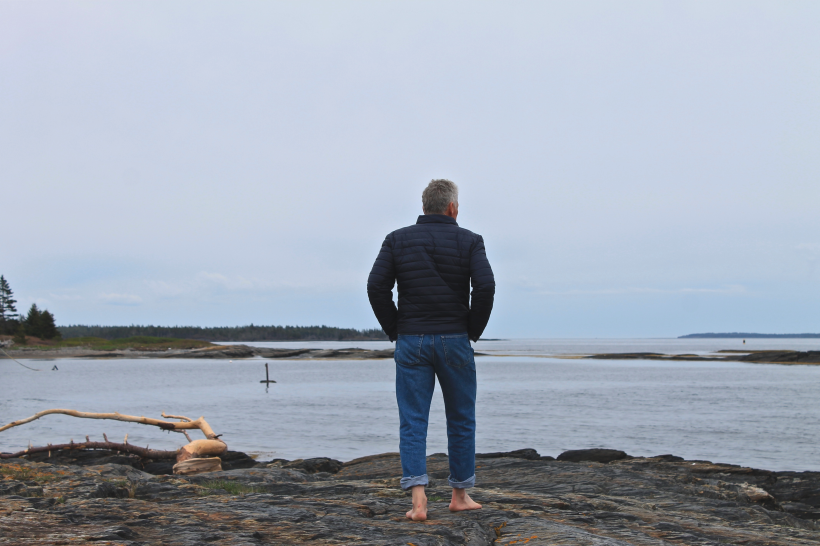I started training Oliver at age 11 last summer. He is now age 12 and a committed tennis player in London, Canada. He will begin playing age group tournaments in the Greater Toronto area this spring, summer and fall. It will give him a gauge as to how he ranks in the U14 age group provincially. Thus far, he is progressing well according to his tennis coach. He is also progressing well training in my gym specific to tennis.
The following photos and captions will take you inside the specifics of one of our sessions. Note he does all of the drills barefoot – a prerequisite for training with me! In photo 1 below, Oliver opens up his back on Level 3 of the Health Bridge (the highest level available!). This helps keep him aligned and squared up.

In the following photo, Oliver uses the Extensor cords of my SkiX trainer. He picked up the technique quickly and now uses the movement with or without cords daily to activate the posterior chain of his body. This helps him maintain perfect posture especially when in the ‘tennis ready’ position.

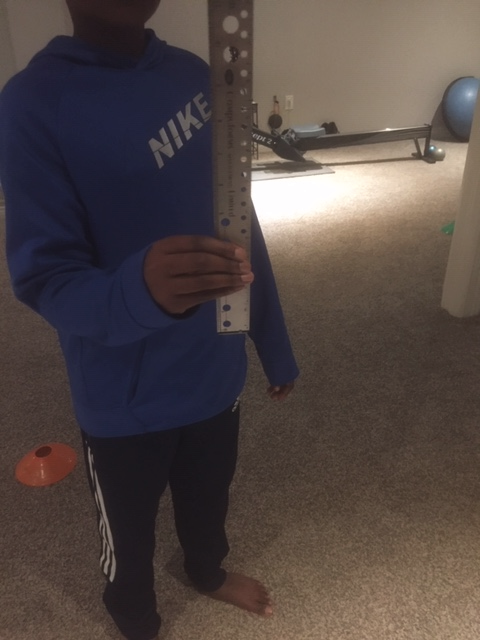
Above, I have Oliver try to grip a ruler as I drop it between his fingers. The goal is to clasp the ruler before it slides through the fingers. When we first started the drill, Oliver often missed the ruler completely. Now, he grips it within 1 to 3 inches with both right and left hands. This indicates his speed of brain processing is improving, thus allowing him to react faster to a tennis ball as it rockets off an opponent’s racquet. The end result is better, more accurate returns.
Below, Oliver balances on 1 leg with his eyes closed. The goal is to hold the position for a minimum of 30 seconds, maxing out at 2 minutes. Oliver could not balance for more than 5 seconds on wither leg when we started – he now averages 40 seconds per leg. This shows me that his proprioceptive (from the arch of his bare feet) feedback loop through the balance centre of the brain is improving weekly. Improved balance is important in all aspects of tennis.


Above, I have Oliver balancing on 1 leg at a 15 degree angle on a slant board with eyes open. I am testing his pronation (inner part of the foot and ankle) for strength and stability. The goal is to balance for a minimum of 30 seconds on each leg. Oliver started at 10 degrees (the lowest level) and could only hold in pronation for 3 to 5 seconds on either leg. Being so weak in pronation put Oliver at a high risk of spraining (or worse) his ankles on the tennis court. After specific strengthening work over the past 8 months, Oliver can now hold the pronation position for 28 seconds on either leg…AND he has not suffered an ankle injury to date!
A major area of weakness with Oliver when we first started training together last summer was his lack of upper body strength endurance. I have been training him using a variety of exercises to overcome the weakness. One of these is the reverse supine pull-up (see photo below). This shows Oliver doing a standard grip pull-up using a broom handle suspended between a stack of storage boxes. He then does the same exercise but with a reverse grip. The goals are to touch the chest to the bar keeping the legs straight and slowly lower the body to just above the floor and then repeating 10 times for 2 sets of each. He started unable to do 1 perfectly but can now do 10 standard and 6 reverse x 2 sets. Being strong through the upper body is essential for Oliver to increase his tennis stroke power without injury.


Above, Oliver performs the roll-out exercise – one of the most challenging core and arm exercises I have him perform in our sessions. He must start with the roller under his chest and slowly roll it forward from his knees until his body is parallel to the floor. I have him roll out and back to his right, in the middle and to his left. The goal is 5 circuits of 3. At the beginning, Oliver could not do 1 rep of each – his core, shoulder girdle and arms were that weak! He is working up to the goal gradually with perfect practice, gradually moving further out without collapsing onto the mat. Perfecting this will carry over to better stability through the tennis motions and less negative strain on the wrists, elbows, shoulders, lower back and hips – all sources of common tennis injuries.
Below, Oliver performs paddle handle push-ups rotating the hands in on the way down and out on the way up. His technique is now almost perfect – he does 10 reps turning in and 5 reps turning out x 2 sets. At the beginning, he was unable to do 1 of each correctly. The exercise helps strengthen his wrists, forearms, upper arms, chest, shoulders and back. He must also activate his butt and abdominal muscles to protect his lower back.


The slide pad under Oliver’s left foot (above) allows him to slide out wide as if slipping on the court surface while hitting (in this case) a backhand. I have Oliver do 15 reps to the backhand and forehand sides and the same number angled forward to either side. This helps him strengthen the inner thighs to avoid needless groin and hip adductor injuries.
Below, Oliver catches a tennis ball tossed by me randomly. It could be to his right, left, centre, forward to the right or left and wide right or left. He must pick up the ball quickly, react accurately, catch the ball and toss it back to me – always returning to the centre ‘ready’ position. His improvement in the drill has been significant – a sign that his reaction time is improving along with his depth perception and hand-eye coordination – all important for success in tennis.



The above 2 photos show Oliver using a series of kettle bells to do overhead 1 arm extensions from a low squat position. He has progressed from 5 pounds only to 8, 10, 14 and 18 pounds x 3 sets with no rest between sets. This helps strengthen his whole body, especially the shoulder girdle and upper back – 2 high risk injury areas for prepubescent tennis players.
Below, Oliver performs a 3/4 squat holding 10 pound dumbbells on his shoulders while balancing angled forward on a 15 degree slant board. This forces him to better activate his front thigh muscles, calves, gluteals and hamstrings. He started with 5 pound weights 10 reps x 1 set. He now uses 10 pound weights 10 reps x 3 sets perfectly aligned and powerful. On court, he now hits harder with more accuracy and less muscle fatigue.

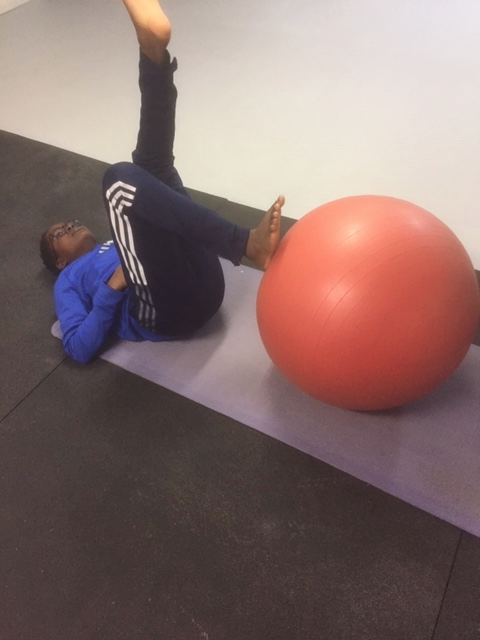
Isolating the 3 hamstring muscles is critical for balancing the naturally stronger quadriceps muscles of the front upper legs. Above, Oliver performs hamstring curls with 1 leg pushing into a stability ball as he rolls the ball to his butt. He must keep his butt and low back along with his arms off the mat while curling the leg in and pushing out. He turns his toes in, to the middle and out x 5 reps on each leg. His improvement in hamstring strength has been noticeable and he now pushes off stronger from forehand and backhand sides.
Below, I am putting Oliver through isolated forehand and backhand kneeling medicine ball (8 and 10 pounds) throws for power, distance and accuracy. He must move with speed across his body as if swinging the racquet. We started with 3 pound balls with difficulty. Now he handles the heavier weights with 7 reps per weight per side x 2 sets.


Above, Oliver works against the resistance of a COREFX tension band. He explodes forward into a forehand or backhand stroke with his racquet. This improves his strength, balance hitting into the ball, footwork and explosive power off the mark – all important in elite tennis performance. He does each stroke for 30 seconds x 3 repeats then does them without the band. With no tension, the motion becomes almost effortless for him.

Above, Oliver uses a variety of tension bands from 10 pounds to 30 pounds of resistance simulating forehand, backhand (photo above) and serving motion. He does 10 reps of each stroke and resistance. This helps him build strength endurance and specific muscular development in the upper back, shoulders, arms and hips.
Below, the six-sided super ball can be seen careening off the wall. The drill requires Oliver to stand 10 feet away from the wall and throw the ball at the wall. He never knows where it will bounce (due to its 6 protruding knobs) but the goal is to catch it 17 times in 1 minute. If able to do that, he moves in 1 foot. The drill continues until Oliver is able to catch the ball 17 times in one minute from 3 feet away. He stared by catching the ball twice in the minute. After 9 weeks of doing the drill, he is up to 12 catches. It is a MOST difficult drill but ultra-important for eye-hand-body reaction, speed of first step and accuracy of movement. It helps develop his ability to pick up a tennis ball quickly as it leaves his opponent’s racquet.



In the 2 photos above, I toss a tennis ball to Oliver who is in a push-up position. I have 1 ball in each hand. He does not know which one I will toss and whether I will toss it to his right or left side. The goal is to catch it and toss it immediately back to me. This is a great warm-up drill as well as a coordination, balance and core strengthening exercise. He has improved to the point where we can do the drill for 1 minute at a time.

Above, I have laid out 5 different coloured cones simulating a mini version of the tennis court. Oliver starts in the mid baseline. I call out a colour but point to another colour. He must process the command and then quickly move to the cone where I am pointing. At times, I will call out a colour that is not one of the 5. Oliver must remain in the mid-court ‘ready’ position. Initially, Oliver made many errors during the drill. Now, he is almost 100% accurate in his response and stroke mechanics. This is a good conditioning drill as well as a brain processing drill. It reinforces for Oliver the importance of a quick AND accurate first step-there is no room for error.
We finish each session with specific tennis-related stretching and unlocking exercises such as the Brettzel stretch in the photo below. He will do active (range of movement) stretching as well as static (20 second hold) stretches. This helps calm down his body and help protect key muscle groups from needless strain and tear.

Oliver is a special young man of few words and a ready smile. He is a quick study – picking up challenging concepts, processing them and performing them repeatedly until he does them perfectly. This is starting to pay off in his on-court tennis performance. Focused tournament play begins for him from March, 2023 in the boys U14 division. It will be a challenging journey supported by his tennis coach, his parents (Prisca and Jedrin) and me.
In closing, I want to acknowledge Oliver’s parents (Prisca and Jedrin) for their unconditional support, understanding and patience with the tennis process. At the end of the day, Oliver will take his tennis game as far as he is willing!!
coach Jeff






